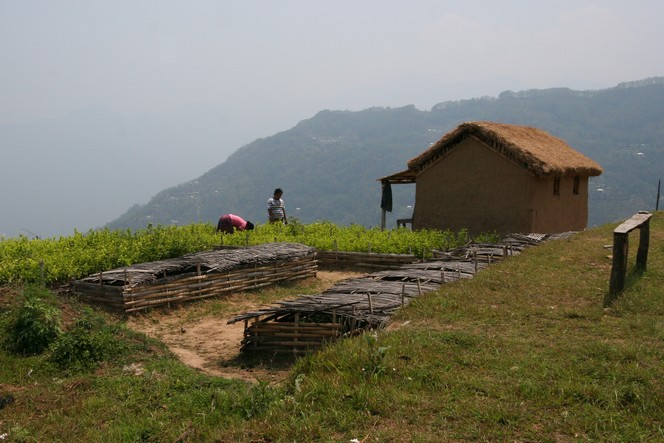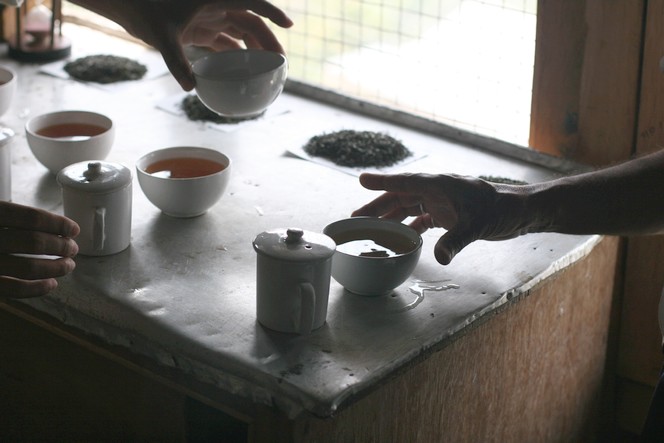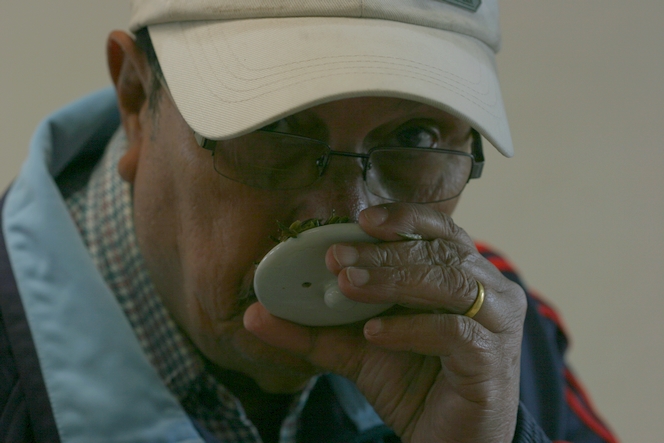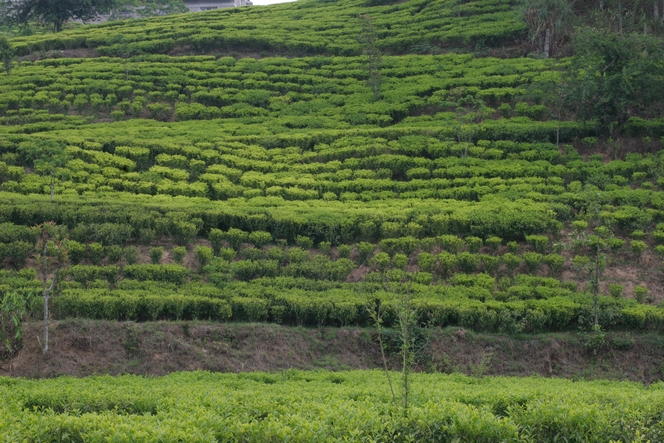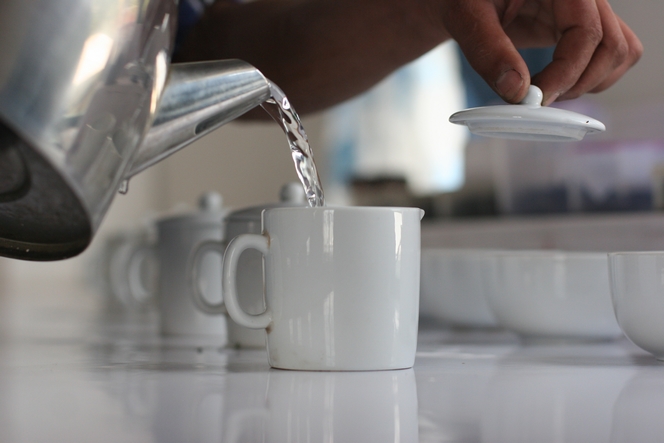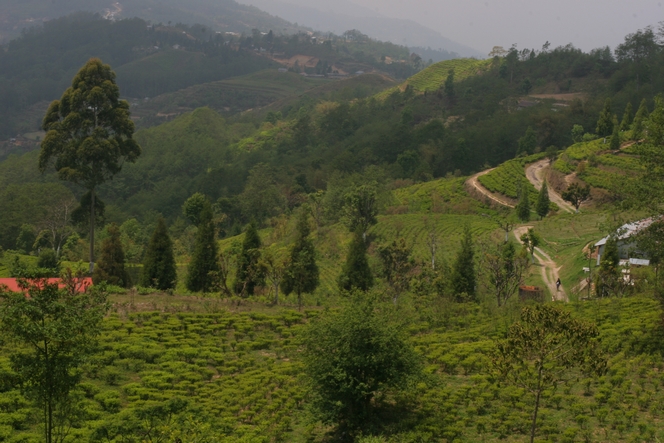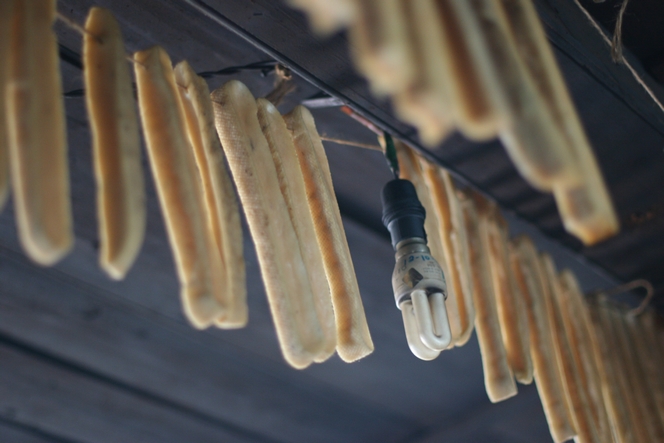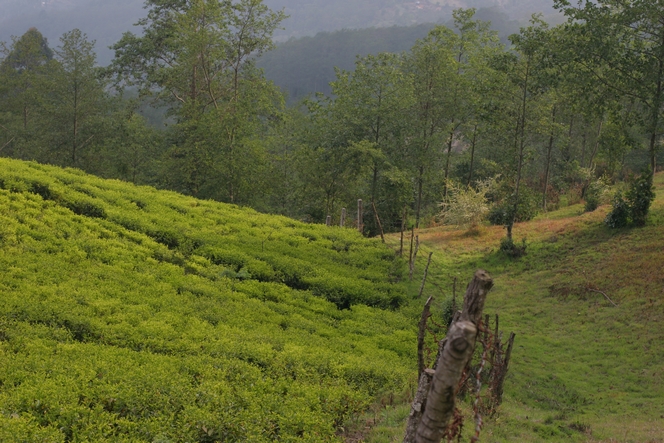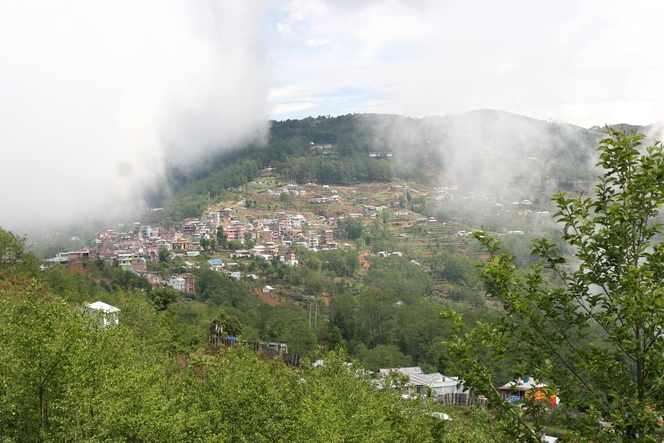While many of you are taking advantage of the long weekend of the Ascension holiday to escape to the country, I’m in Paris at my tasting table with an impressive number of samples before me. I won’t have time to taste them all over the weekend. In Darjeeling, the harvests are over, but I’m now receiving new-season green teas from China, all very fine examples indeed. Every year, their vegetal aroma is like a big bowl of fresh air. I’m also getting sent most of the Nepalese teas which, in nearly a decade, have achieved excellent standards. New gardens are joining them and making themselves known. Excellence is worth waiting for – it has taken them years to reach this point. Just like these young tea plants, which are receiving such attentive care.
Nepal
I taste about 50 teas a day
This March I’ve tasted about 50 samples of tea a day. The first flush Darjeelings launch the season, followed swiftly by the Nepalese teas. A little later it’s the turn of the new-season China green teas. Then the Japanese Ichibancha. The teas are tasted blind, of course. The ritual is always the same: having smelt the infusion, you suck in the liquor and swish it around your mouth. You analyse the texture, the flavours, the aroma groups. You take your time. You taste and you taste again. You have to concentrate… Except for when a photographer bursts into the tasting room and captures the moment.
Tea tasting: a special moment
Tea tasting is a special moment for me. While we wait for the teas to infuse, we talk, or we look at the dry leaves. Then, when the tea is ready, we exchange cups, without a sound. We inhale the aromas of the leaves, look at the liquor, and taste it. Then we compare it with the cup beside it. It is a moment of pleasure and of concentration. Hand movements are precise and slow. To me, this serenity is important in order to appreciate all the pleasures offered by a cup of tea.
Smelling the wet tea leaves : an essential step
When you taste tea, the first thing you do is look at the dry tea leaf, of course. Then you bring the liquor to your lips and analyse the flavours, aromas and texture. But assessing the qualities of a tea includes another important step: smelling the wet leaves that have just been infused. For this, we can follow the example of Peter Orchard, manager of Kuwapani Tea Estate, who you see here, plunging his nose into the leaves while they’re still warm. Peter is looking at me but he is elsewhere, concentrating intently on the smell of the infusion, a smell which says a great deal about the quality of the lot he has just tasted.
Tea trees growing quite freely in Kuwapani
I am very aware of how lucky I am to be able to spend several months a year walking through tea fields. I never tire of it. Each tea plantation looks different. Some slope, others are flat, some are densely planted, others sparsely. Some are wooded, but the trees vary from one region to another.
What I like about this photo taken on Kuwapani Tea Estate (Nepal) is the contrast in these tea trees planted in rows that are quite orderly, yet which leave room for some interesting effects. The wavy lines follow the irregularities of the terrain, with a certain sense of freedom. They have adapted to their environment. We can see how the hand of man has marked out a neat line, and nature, rebellious, has ignored it.
Preparing tea requires precision
Preparing tea requires a certain amount of precision when it comes to professional tasting. If you are preparing to taste and compare a number of teas, it is essential that the infusion takes place in exactly the same conditions for them all.
So everything is done with attention: the water must be at the correct temperature, the recipients must be clean and of the same colour. The exact same quantity of leaves is placed into each pot, to the nearest tenth of a gram. Then the infusion can begin – timed, of course.
Splendid view from Kuwapani tea garden
The plantations in the valley of Hile, in Nepal, were established recently. The oldest garden among Kuwapani, Guranse and Jun Chiyabari was created not much more than ten years ago. This might in part explain the quality of their tea, because the bushes they chose to plant on these mountain slopes are recent cultivars, famous for their aromatic properties. In addition, each of these plantations has developed innovative techniques for rolling the leaves, which is unusual in Nepal and India.
These three plantations are also special in that they are situated right next to each other. In this photo I took of Kuwapani, you can admire its splendid views, of course, but you can also see the red roof of the Guranse factory, close by.
In Nepal, cheese dries like laundry on a line
I was in Nepal recently and accepted an invitation I had received on numerous occasions to enter a house, often a farm. And I have had many opportunities to admire these strange forms hanging above my head like laundry on a line. It is difficult to know which is more incongruous, the electric bulb or these sticks.
But what is this stuff the colour of fresh butter?
In fact, it is cheese, drying out until it becomes as hard as rock. When it comes to cutting it, no less than a pair of pincers is required. Chewing it is no easier: even just a tiny piece left to soften for ten or twenty minutes in the mouth is still inedible. It requires enormous patience to actually chew it and extract its minimal flavours.
Undisturbed tea trees in the setting sun
Last month a strike affected all of Nepal’s tea plantations, and for more than ten days the tea trees were left to grow undisturbed. This explains why, in this photo taken at Kuwapani, the delicate yellow colour of the new shoots reflects the light of the setting sun in such abundance. Over on the right of the fence, the grass is so closely shorn because the region’s many stags and roe deer have not joined in the movement, and show no signs of stopping work.
Makalu : the fifth highest peak in the world
I have just spent three days in the region of Nepal where the country’s best teas are produced. It is a valley to the east of Kathmandu from where, on a clear day, you can see the fifth highest peak in the world, Makalu.
The tea in this high valley is produced by just three plantations: Kuwapani, Guranse and Jun Chiyabari, all equally prestigious. They are situated right next to each other, at an altitude of around 2 000 metres, and this is the village of Hile, opposite.
In three days, I have only enjoyed such a clear view of this village twice, despite it being just a few hundred metres away. So I’ll have to come back another time to see Makalu!

